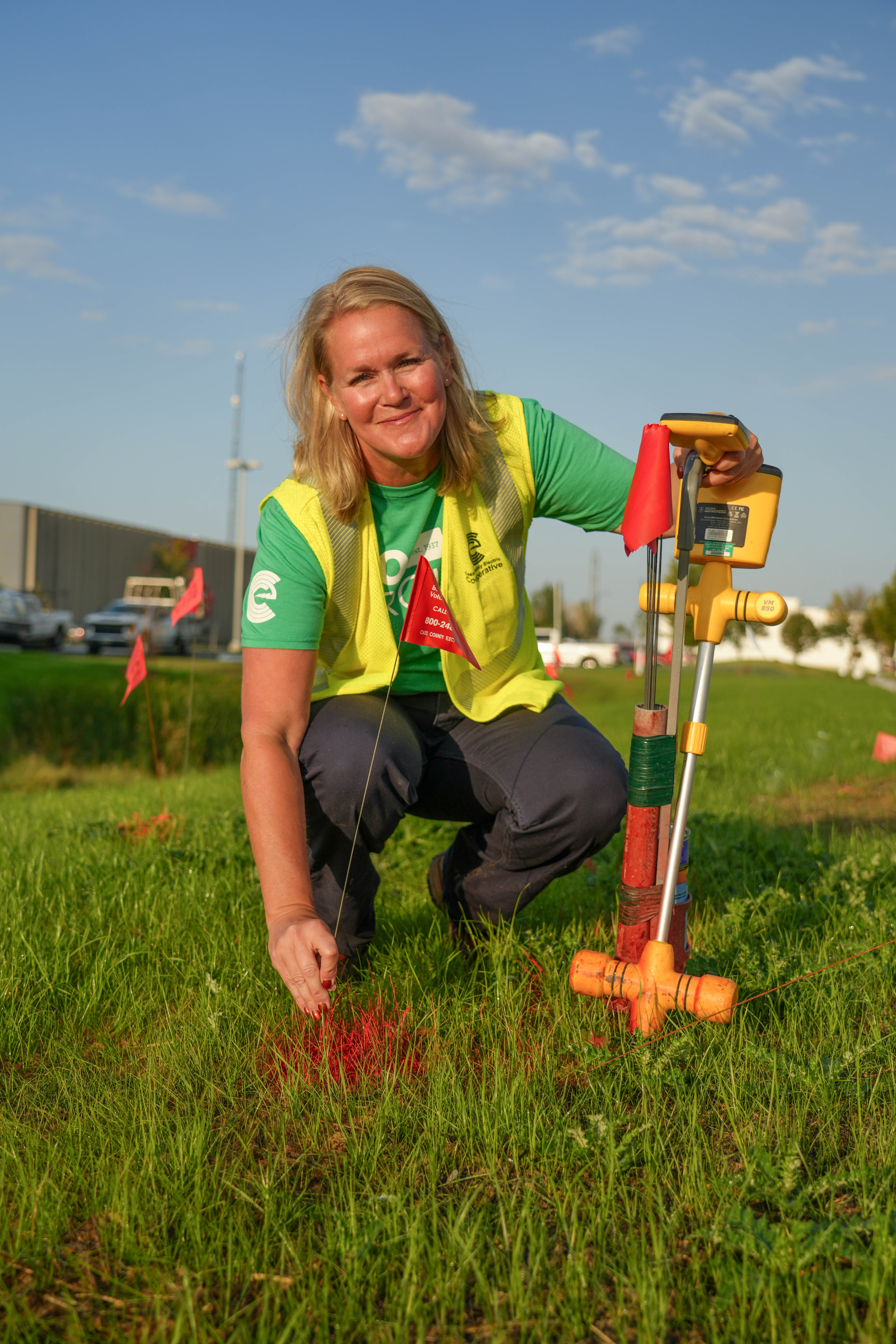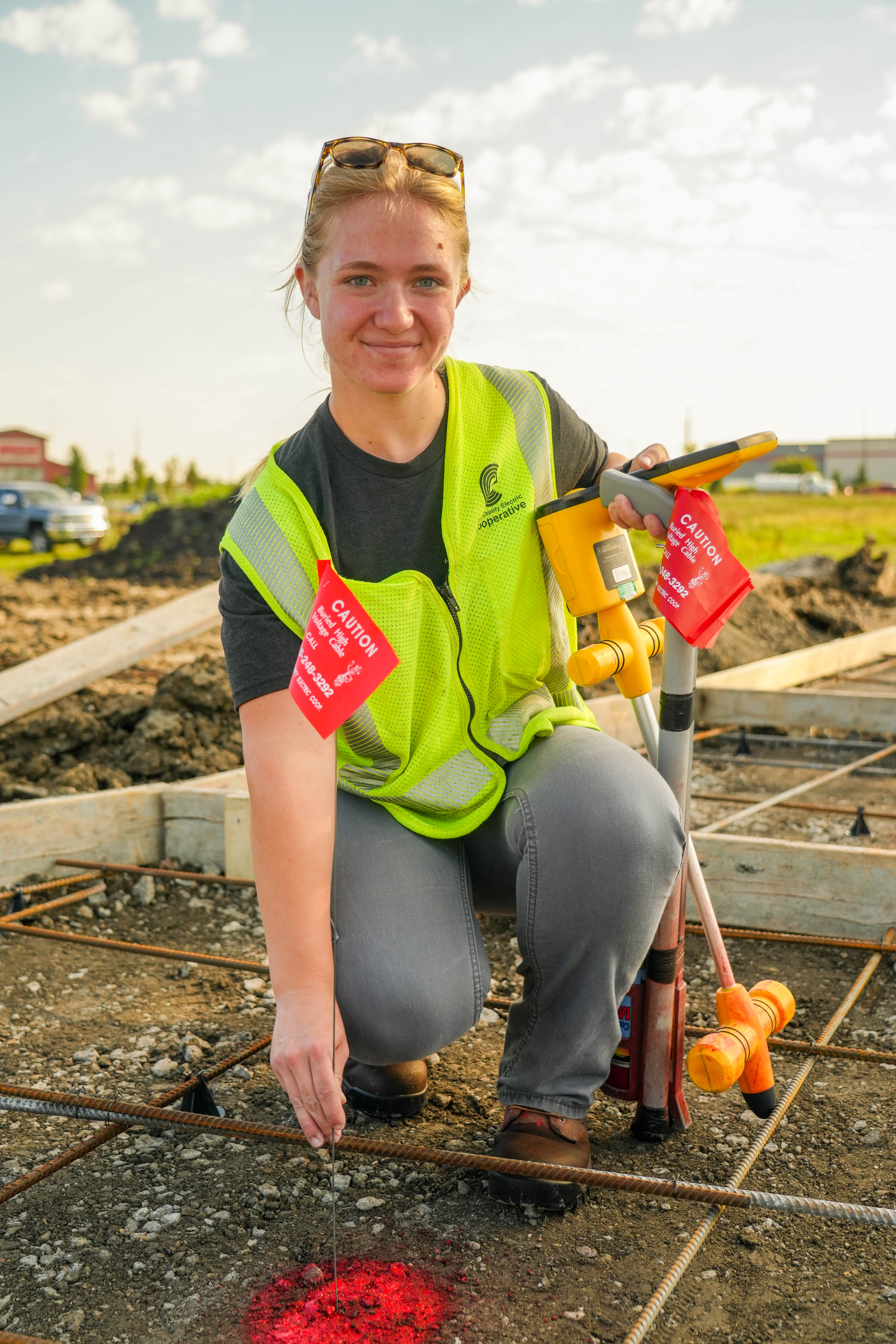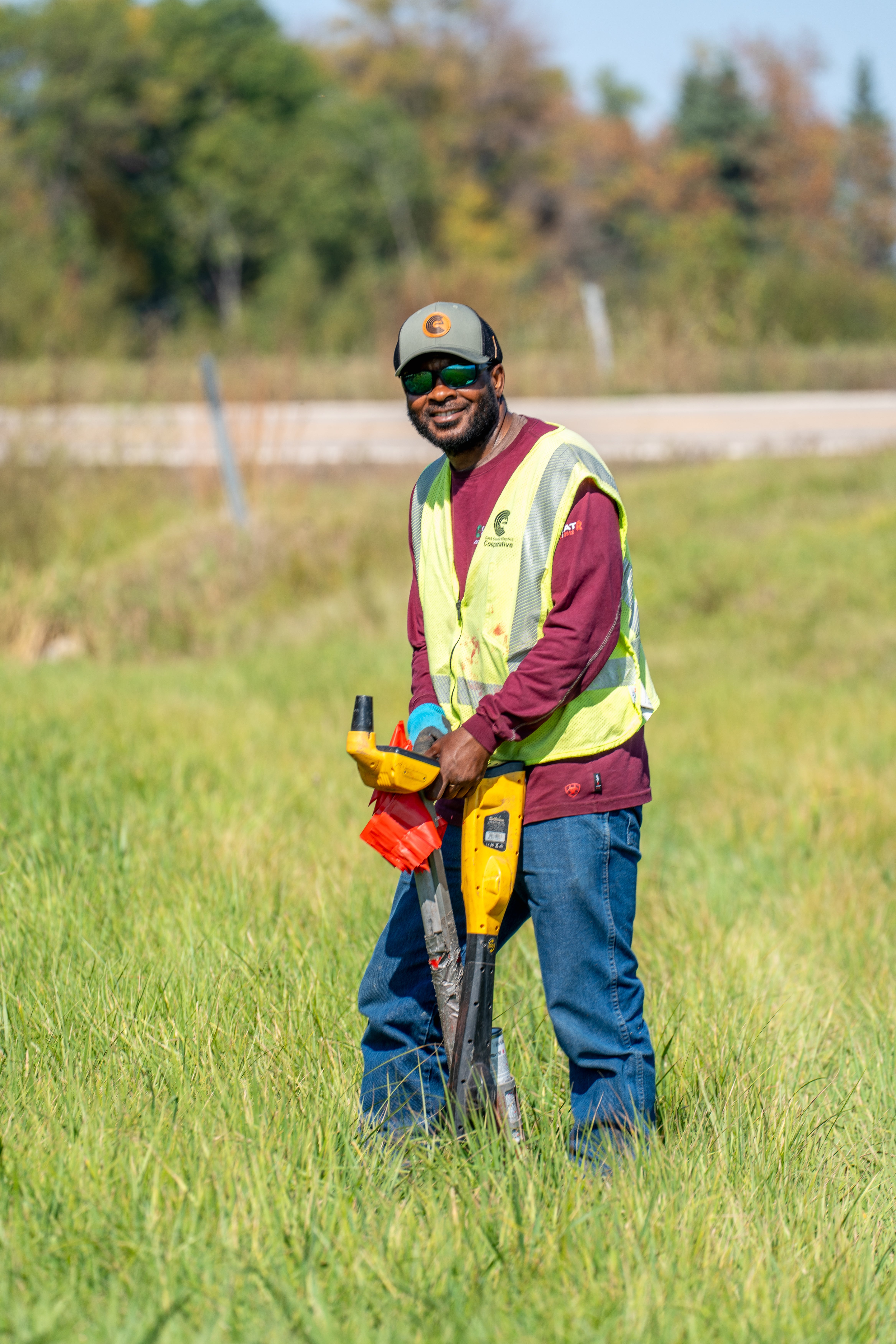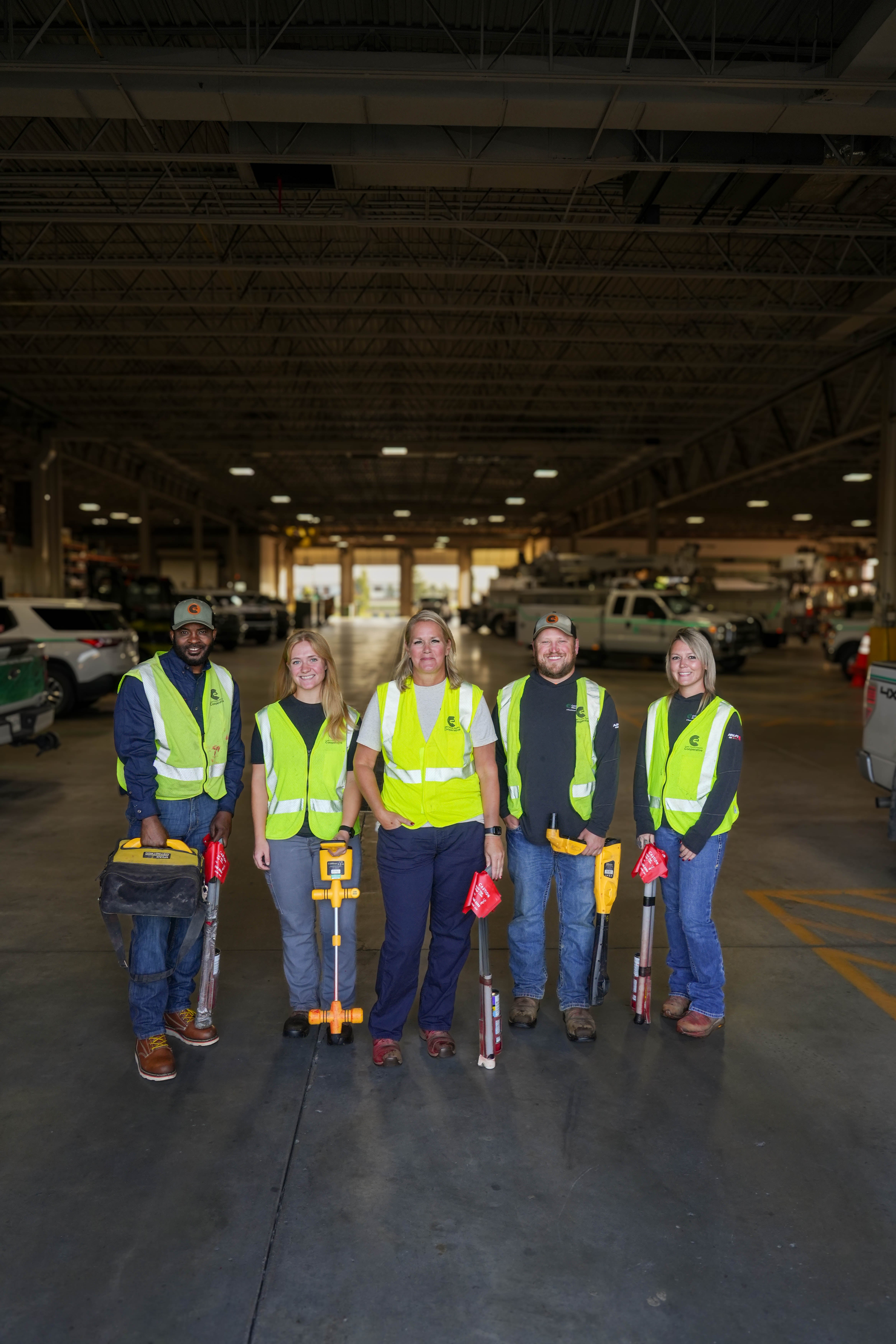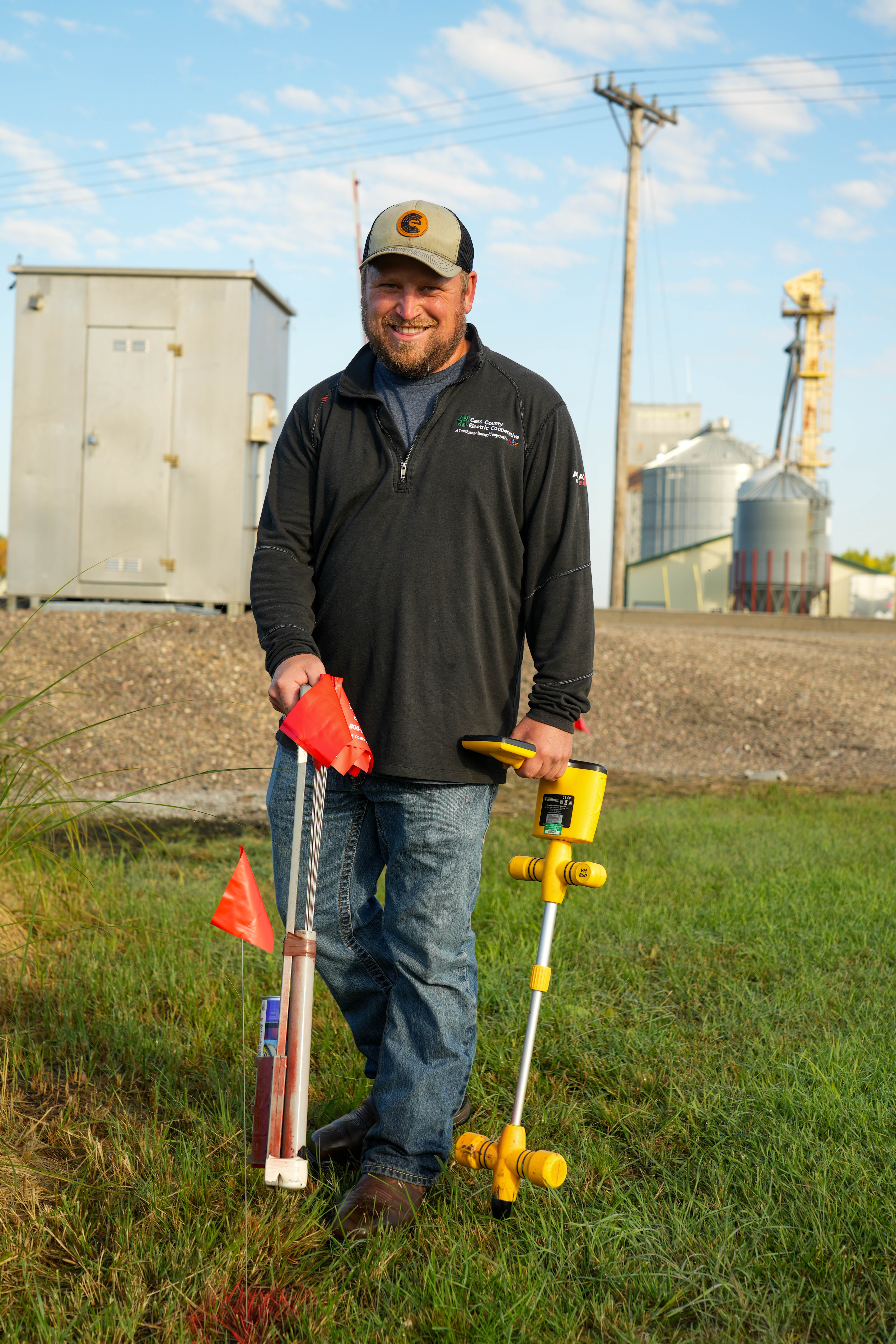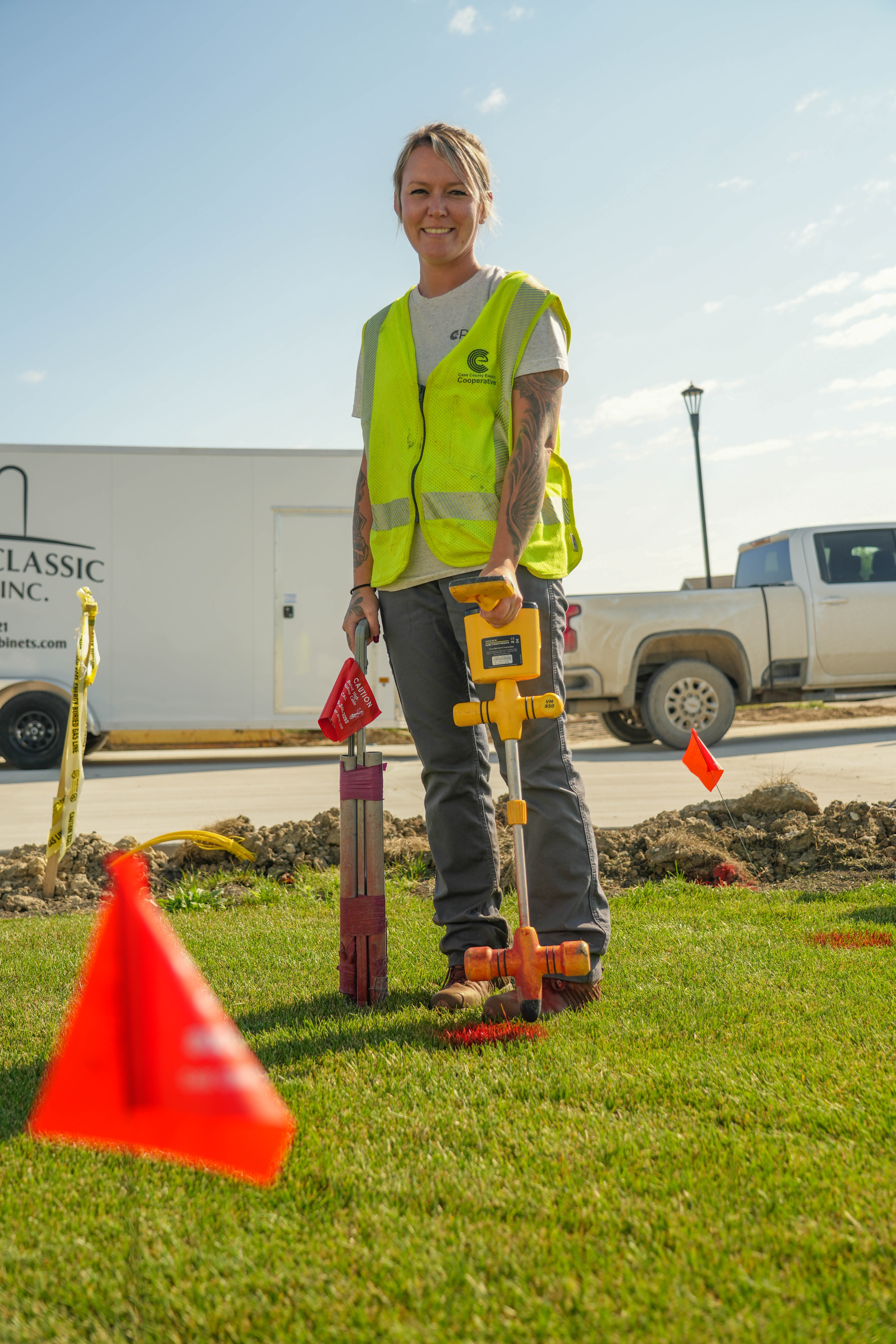Our Office: 4100 32nd Ave. S. Fargo, ND 58104
Locating the future:
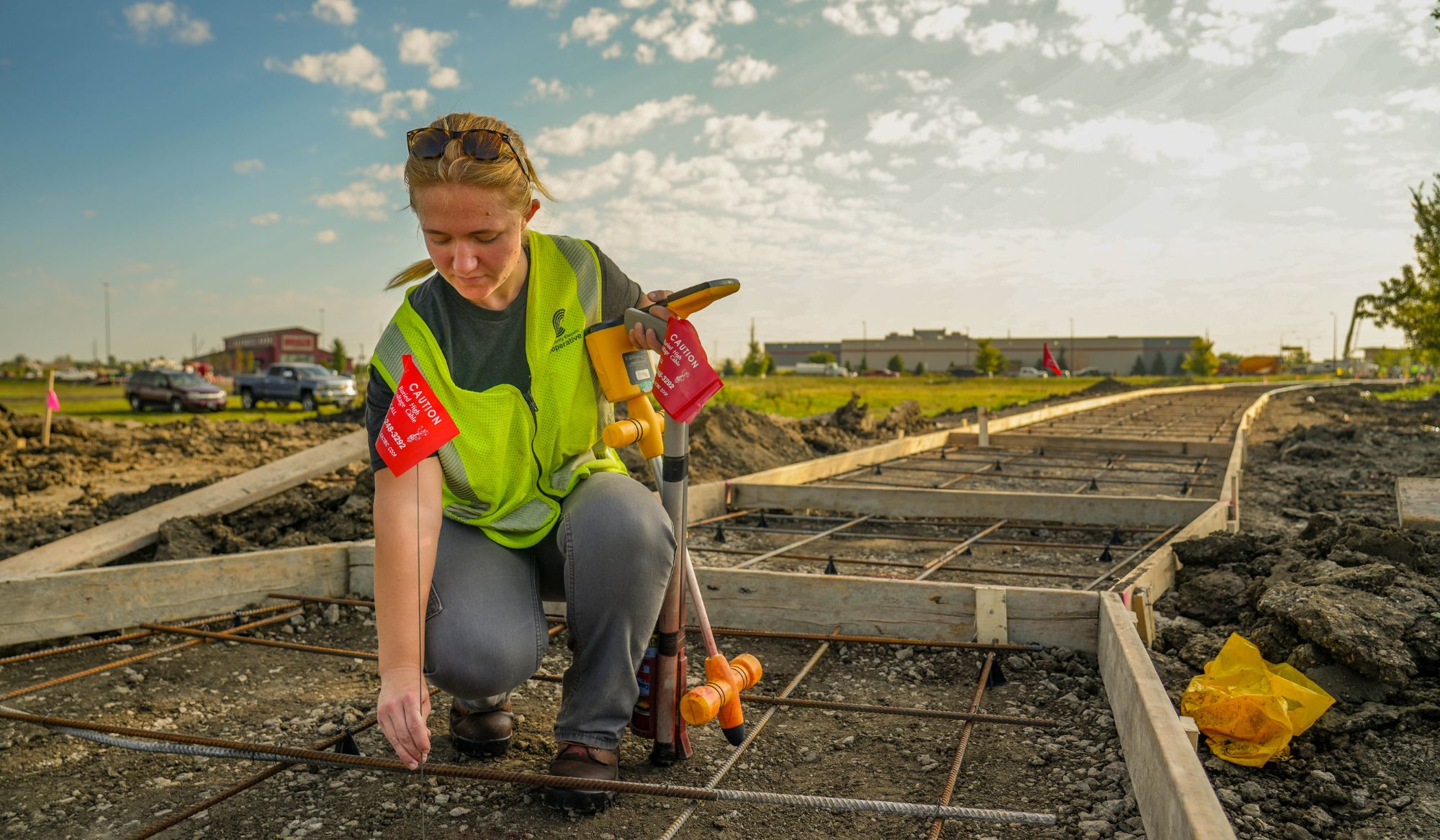
On a crisp fall morning, it is easy to notice the changing leaves or the hum of harvest equipment. Less visible, but just as important, are the small red flags and paint marks lining fields, yards, and job sites. They identify underground power lines, allowing contractors, farmers, and homeowners to dig without risk. Without them, a single misplaced shovel could cut electricity to hundreds of members or cause a serious accident. That is why Cass County Electric Cooperative (CCEC) has made locating a priority. This year marks a milestone: for the first time in 15 years, the cooperative has brought its entire locating team back in-house.
Why locating matters
Every locate begins with a call to 811. From there, CCEC’s locators step in, armed with maps, equipment, and years of experience. Their work ensures that every dig, from a backyard fence post to a major construction project, can move forward safely.
“Locating matters to the community because it keeps people safe, keeps the lights on, and keeps the community running,” said locator Christen Colgrove.
For fellow locator James Prosper, the role is personal. “I tell my son that I’m part of his safety team,” he said.
On a typical morning, a locator arrives on-site with maps and equipment in hand. After checking the area, they hook up a transmitter, sweep the ground with a receiver, and carefully spray paint or place flags to mark what lies below. The process looks simple, but it demands focus.
The shift back in-house
For more than a decade, most of CCEC’s locating work was contracted out. Leadership knew members would benefit from a fully in-house team.
“It comes down to safety and reliability,” said lead locator Amy Mahlum, who has more than two decades with the cooperative. “Bringing our locates back in-house helps minimize damages and outages, and we take a lot of pride in doing it right.”
Having staff locators allows CCEC to oversee training, maintain quality, and provide direct accountability. By bringing this work in-house, the cooperative is keeping expertise local and ensuring members know their safety is protected by people who live in the same communities they serve.
Meet the team
Mahlum leads the new group, drawing on 28 years of experience in the industry. “Some contractors I’ve worked with since day one. Now we’re telling stories about our grandkids,” she said.
Each member of the team brings a unique perspective:
• James Prosper appreciates the cooperative culture. “If I need help, someone is always there.”
• Taylor Wagner values the collaboration. “In the past, locating felt isolated. Here, I see my team every morning, and we plan the day together.”
• Austen Leraas says the people make the difference. “Everyone is easy to get along with, and I have made friends here.”
• Christen Colgrove joined for her family’s future. “Cass County Electric provides stability, great benefits and the teamwork I need to do my best work.”
The scale is easy to overlook: More than 24,000 locates are completed by the team every year. That means thousands of projects, big and small, move forward without disruption. Some days, locators put in five to seven miles on foot, but they all agree the effort is worth it when members can dig safely and the lights stay on.
Impact on members
For members, the change has clear benefits: faster response times, more accurate locates, and the reassurance that the work is done by cooperative employees who know the system inside and out.
“The most rewarding part of my job is seeing a project finished and knowing it was safe because of the work we did,” said Wagner. “Sometimes I point out flags to friends or family and say, ‘I put that there.’”
Leraas put it more simply: “Our job makes sure nobody hits something they shouldn’t. That keeps people safe and the power on.”
Looking forward
The team is already making an impact, but they are also building for the future. With their combined experience and enthusiasm, they are setting new expectations for accuracy, efficiency, and service.
“We call ourselves the Dream Team,” Mahlum said. “Everyone goes above and beyond. You can’t always teach that work ethic, but this group has it, and I’m proud of what we’ve built.”
Christen echoed that pride. “When members dig safely, when the lights stay on, when I know I’ve helped protect my neighbors, that’s the best part of the job.”
The work behind the flags
Members may not often stop to think about the red flags dotting a ditch or the paint striping a sidewalk, but behind those markings is a group of dedicated professionals. Their work rarely makes headlines, yet it is essential to keeping homes powered and communities safe.
As Amy summed it up: “Every day, we show up to make sure everyone goes home safe. That’s what being part of a cooperative means.”
